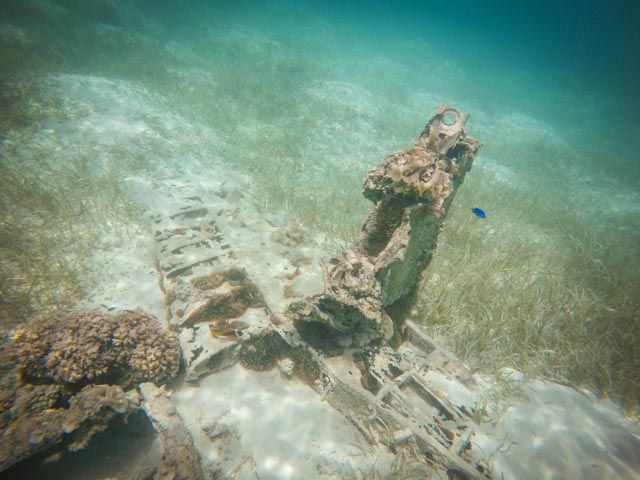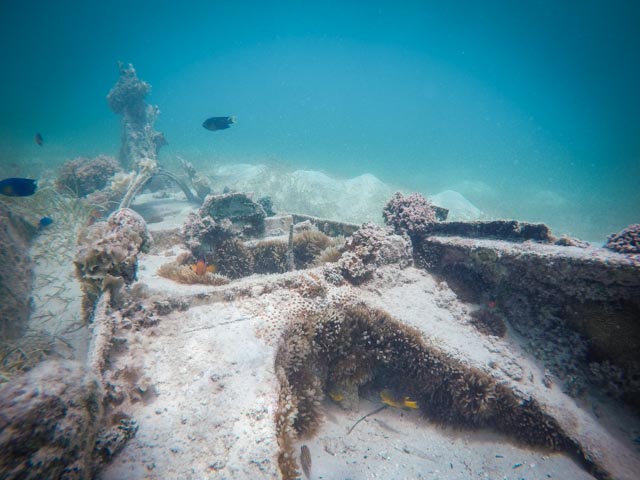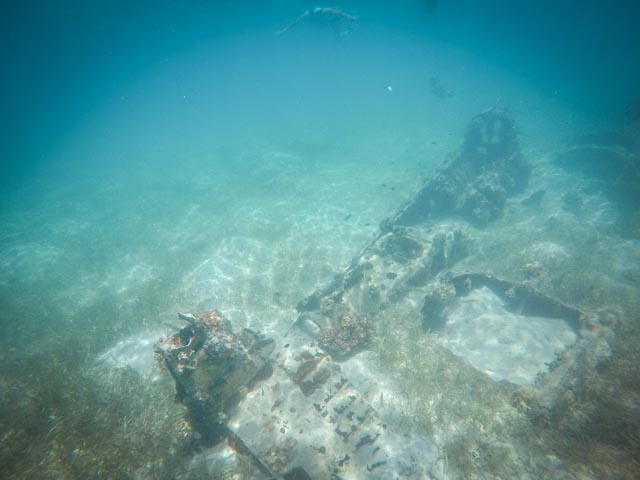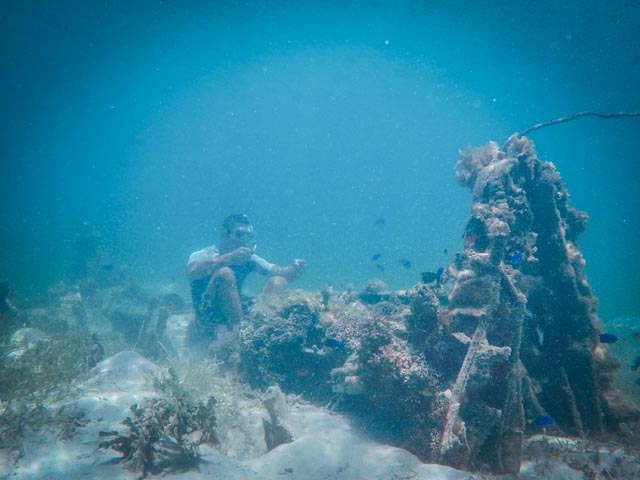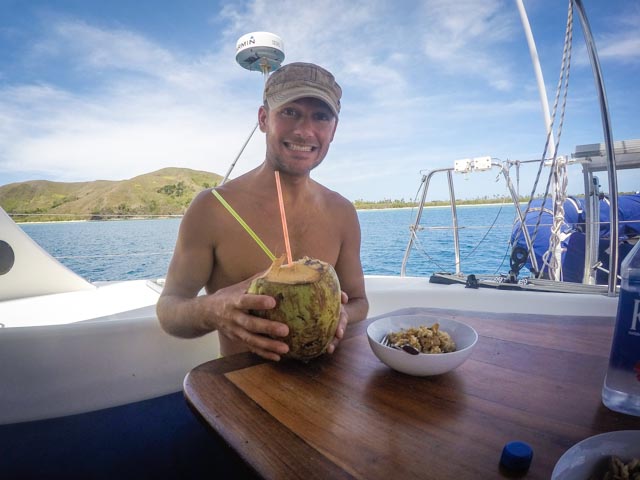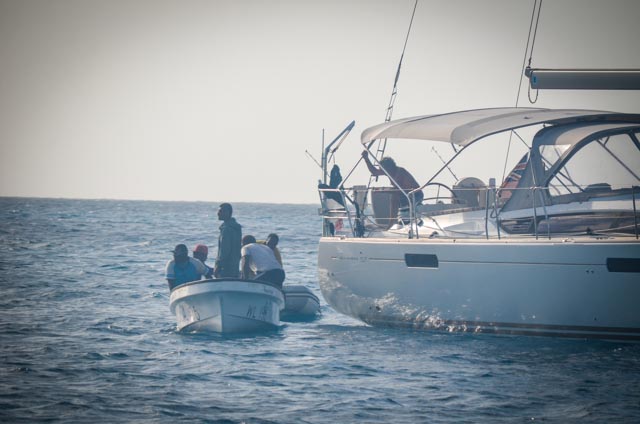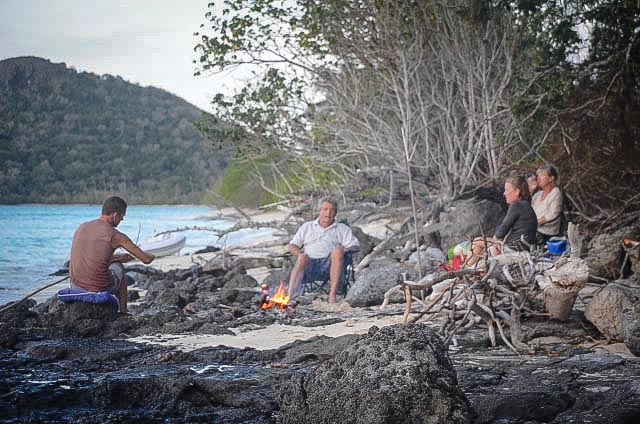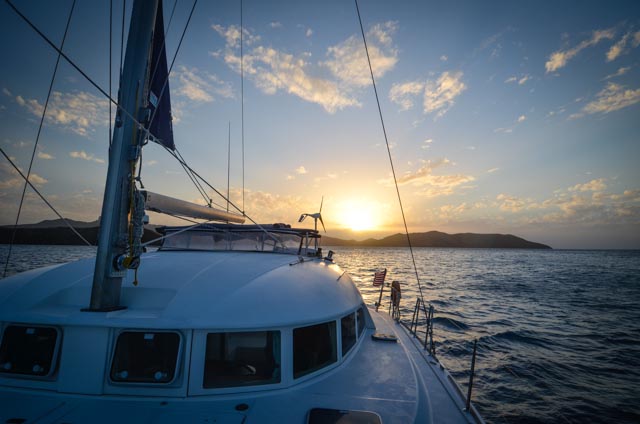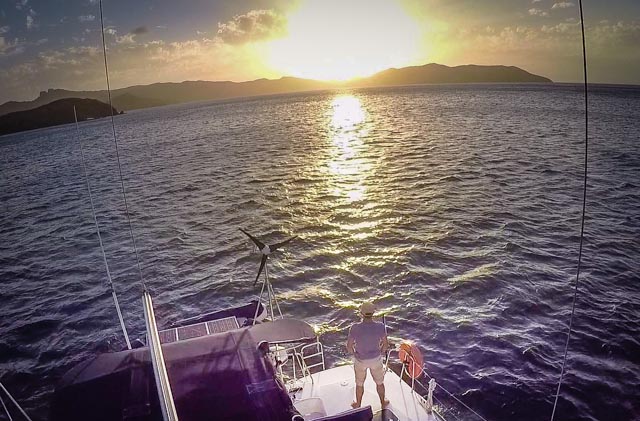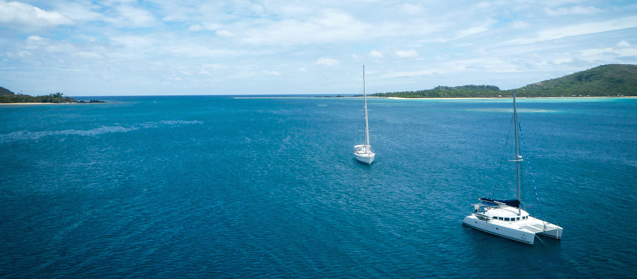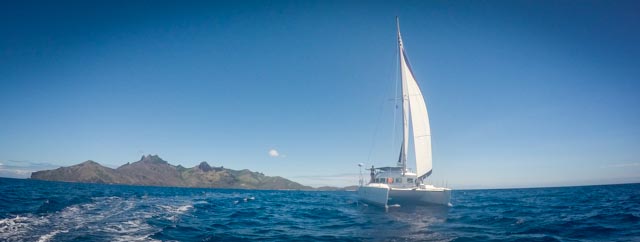Experience a day-in-the-life aboard Tayrona as we island hop in the Yasawa island chain in Fiji.
Author: Pete
Location: Blue Lagoon, Yasawas, Fiji
We set sail in the morning from Somosomo Bay heading north along the west side of Yanggeta and Matathawa Levu islands keeping a wary eye on all those poorly charted reefs. The charts are so contradictory that at one point the chart plotter showed us sailing over a reef that was supposed to be ‘awash’ (think ankle deep), but really we were in 150 feet of water with the reef clearly visible 300 meters to our port. We were exceedingly happy to be sailing in so much sunshine. Cutting into the island chain, we anchored Tayrona in the excellent protection of the Blue Lagoon.
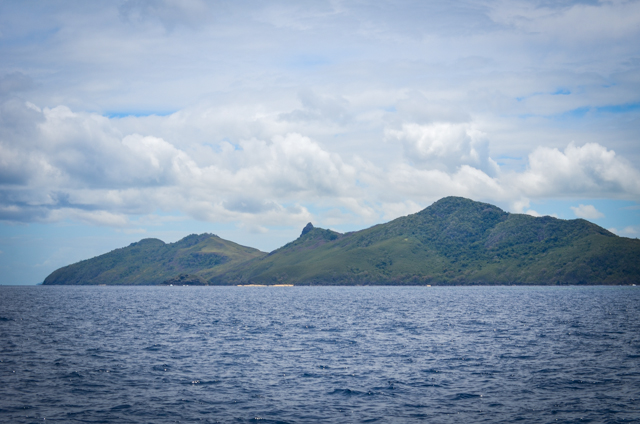
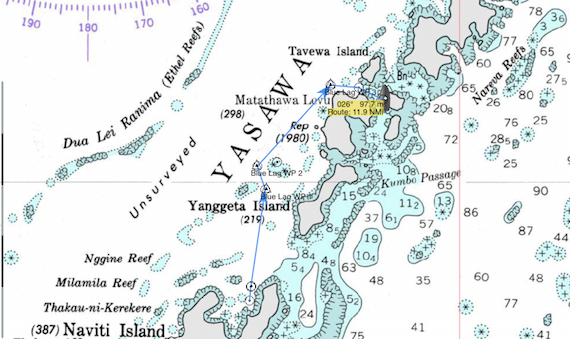
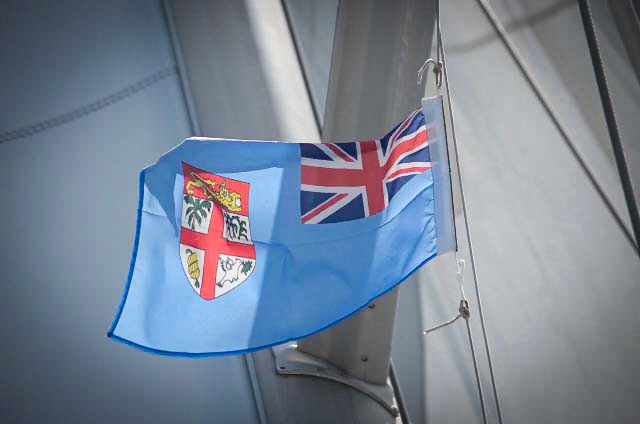
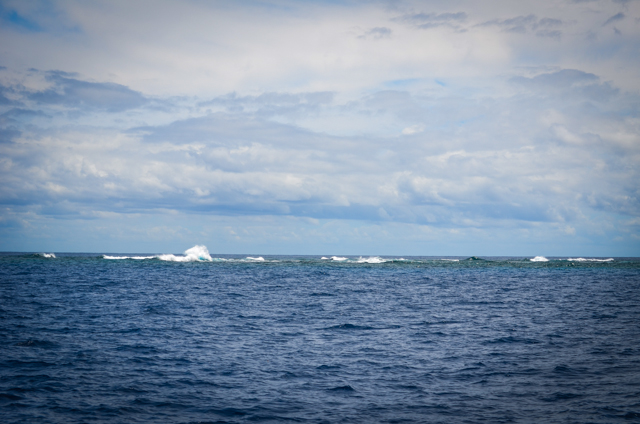
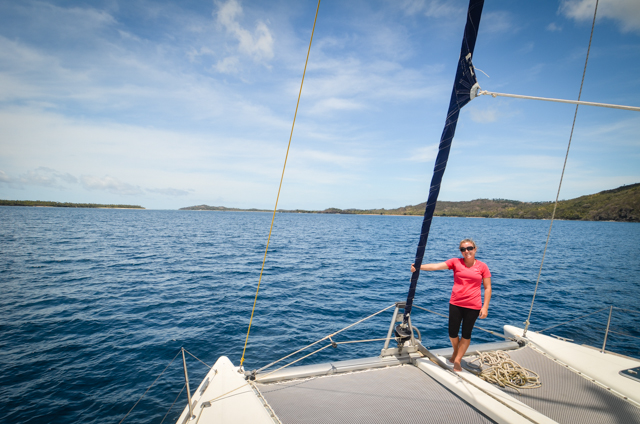
We were again invited to Sunday church service in the village on Matathawa Levu. Seems to be a good way to meet locals and buy fresh fruit. Also, we haven’t hit any reefs yet, so I guess its worth getting up early for the 10:30 service. The church was similar. Following the congregation, we took off our shoes, brushed most of the sand from our feet and padded in to the pews. Little kids looked at us like we were aliens. Heck, so did the adults. The service was again in Fijian. We sat behind the choir and one of the guys passed us a hymn book. The melodies are easy enough to pick up and it was fun to try and guess the pronunciation of words. How does one sing, “Ke’u sa tag tikoga” without sounding like a tenor in Jabba the Hutt: The Musical? With their stunning voices and intricate harmonies, the Fijians pull it off with impressive fluidity and grace.
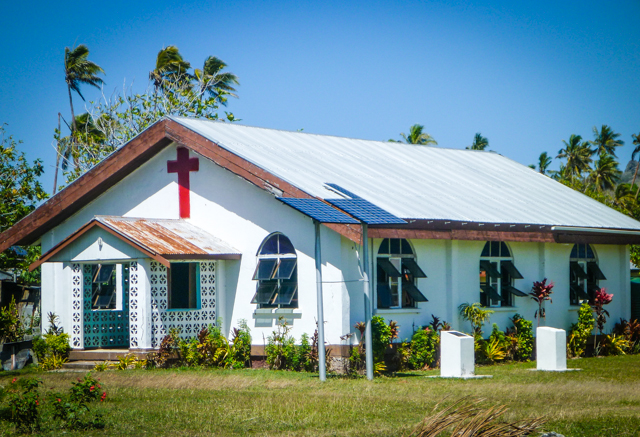
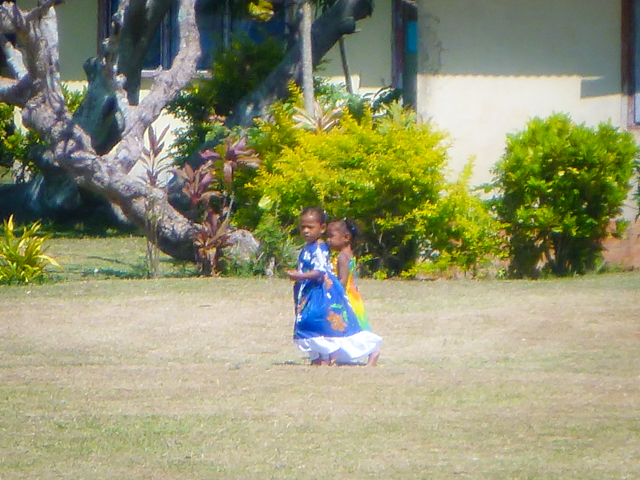
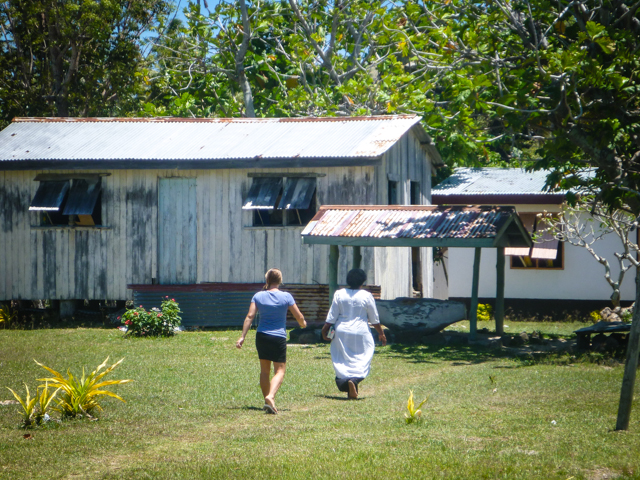
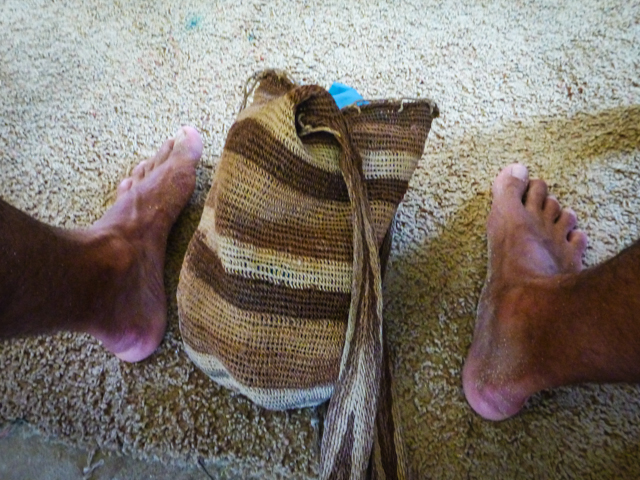
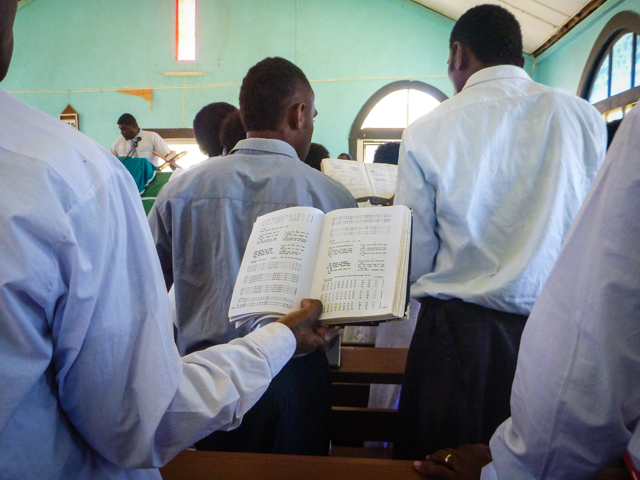
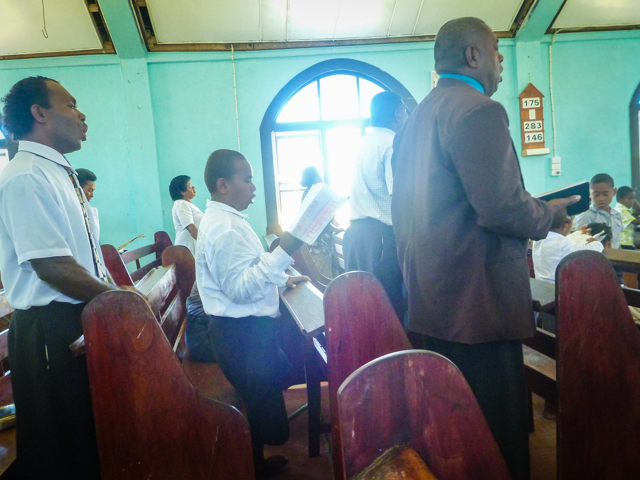
Their doctrine varies slightly from most versions of Christianity in that Jesus’ place on the cross is taken by a crucified lizard. I attributed this to the distortion of the message of God in the decades it would’ve taken missionaries to cross the Pacific, much like a theological game of telephone. I had to watch this guy for a while before he resumed catching bugs.
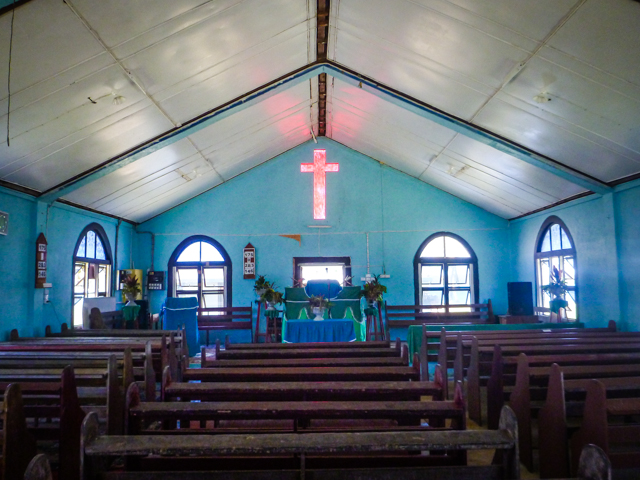
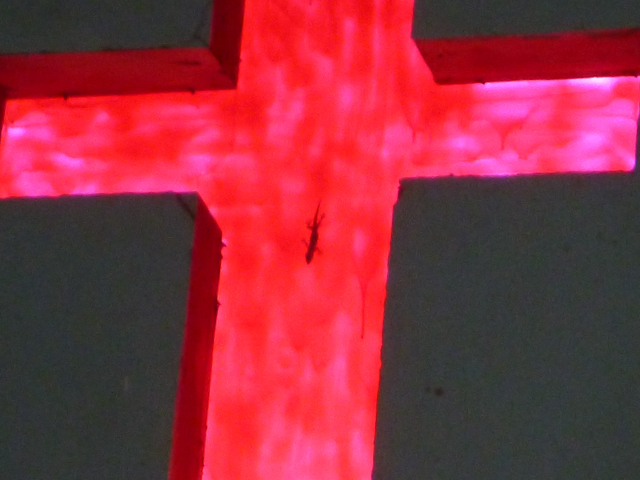
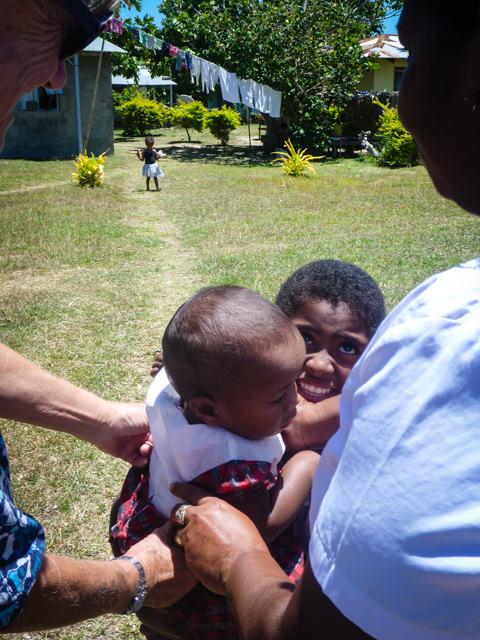
The next few days passed exploring the island’s coral reefs and mangrove swamps. In our wanderings we were invited to dinner with Sami and Lie who lived on Nanuya island in front of our anchorage. They made a traditional feast with cassava, fish, and chicken wrapped in palm-leaf bundles and baked on coals buried in the earth. The spread was ample and delicious, smoky from the coals. There was coconut sauce for the fish and papaya for dessert. We brought a couple bottles of wine to round out the meal. After dinner, Sami busted out the kava, chanted the traditional prayer and brewed the pulverized root in a sawed up fishing buoy. The cup, much like Patagonian mate, is passed to one person who drinks all of it and gives it back to the brewer. Upon accepting the cup of kava on is supposed to clap, say “Bula!” loudly, drink all the kava in one go, then clap three more times. Kava is a plant root which is ripped from the ground, questionably washed, pulverized with a big stick, then brewed in a cloth sack in tepid water. As you’d expect, it tasted like exactly like standing water from a hay field. A few bowlfuls does give one a placid, thoughtful demeanor. Maybe everyone is just thinking, “Hmmm… why am I drinking this again?”
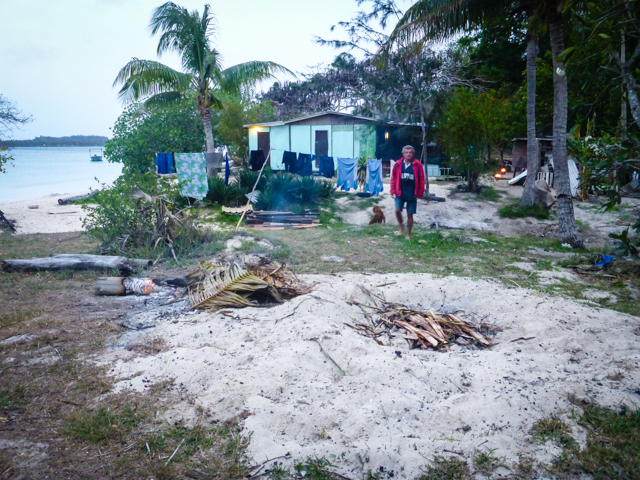
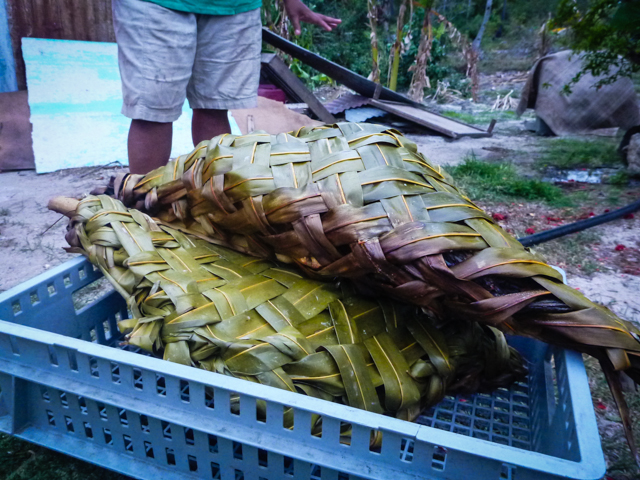
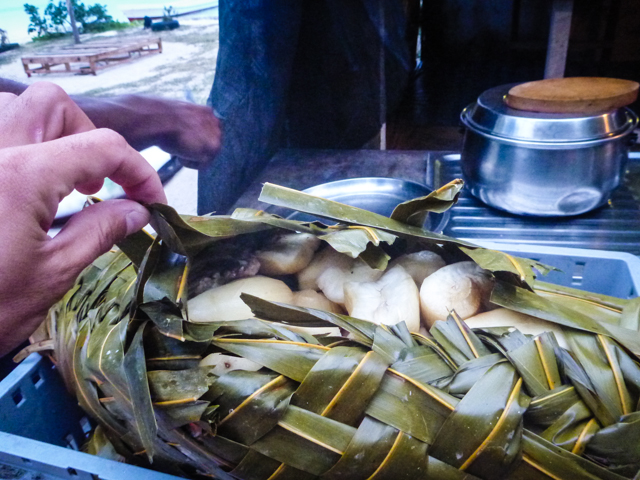
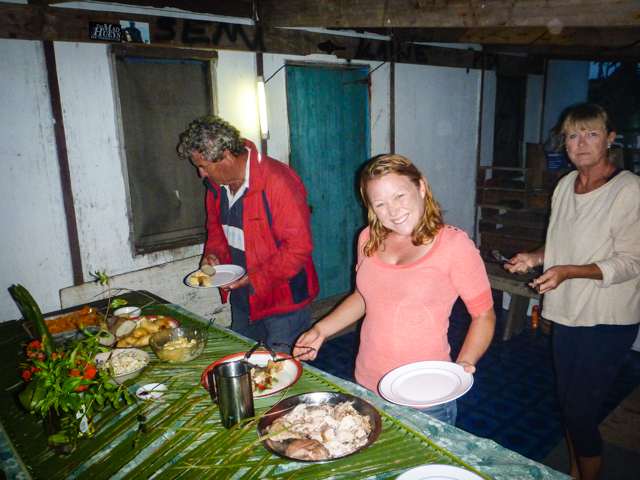
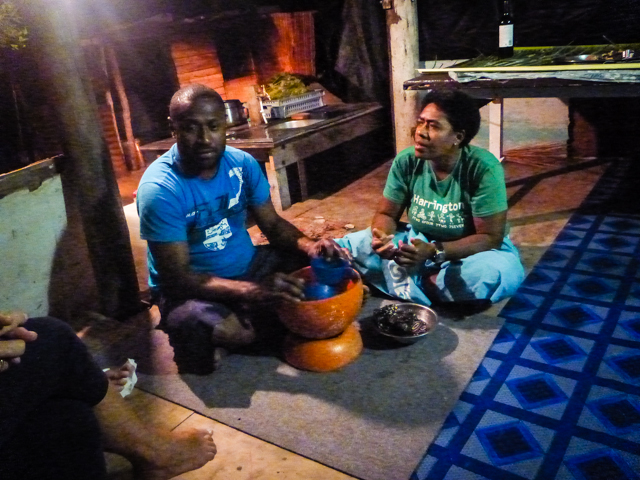
Sami and Lie asked us about life on the sea and in listing the boat systems that keep us safe and happy aboard, we revealed that we have a sewing machine and operate it with some dexterity. We ended up mending a kava pouch, a scarf, and a shredded pair of shorts for them and also gave them needles and thread for when my seams rip open in the near future. They gave us fruit and a gorgeous cowry shell for the help. Why can’t all transactions came down to fruit, shells, and practical goods?

Poor dinghy had been prop-less for a week. Miranda and I eventually tracked down a chandlery in Nandi on the big island of Fiji. The new prop was shipped in from Melbourne then sent out to us on the Yellow Flier, which hauls passengers though the Yasawas to various little resorts out here. We had to tell them which bay we were anchored in and our friend Paul zoomed Miranda over to pick up the part. Despite the annoyance of the down time in ordering a part from Australia, I was impressed that the whole thing could be orchestrated from a cell phone in the middle of nowhere. I love technology.
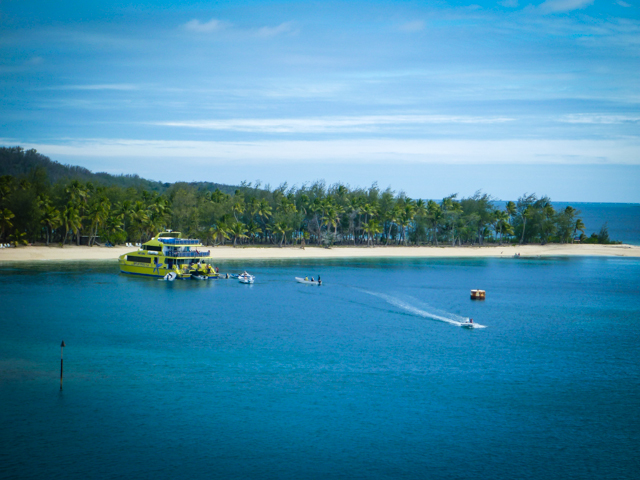
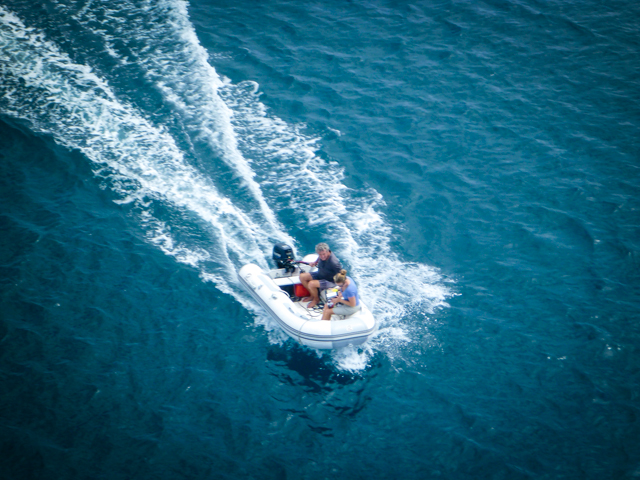
Miranda picked up the new prop because I was busy up the mast replacing our tricolor navigation light, which has been doubling as an anchor light, with a new stacked housing that has both tricolor and anchor lights built in. Many a salty sailor has given me a hard time about using a tricolor at night because it implies that you’re sailing along or a navigational buoy. Now with a real anchor light up there I can’t find the boat in the anchorage because it’s usually red or green! The first night driving back to the boat in the dinghy felt like trying to find a parked rental car. Now what color was that thing? I was pleasantly surprised to find that it wasn’t necessary to run new wire to install the light. Things are looking up. Miranda eventually let me down from the mast too, which is a plus.


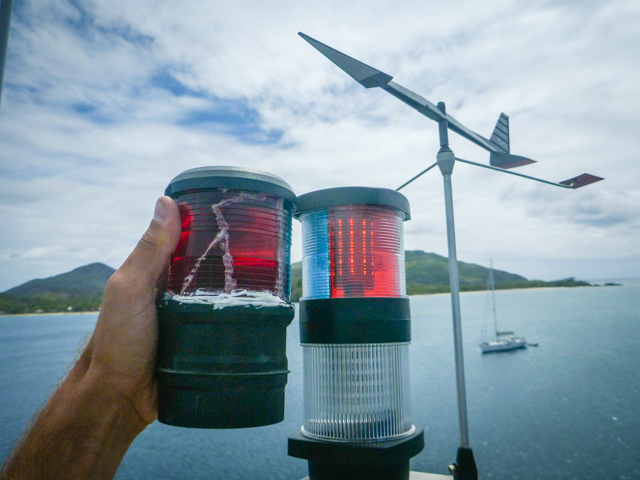
It had been almost a month since our last provisioning run to the Lautoka market. Half of a sad carrot and a couple soft potatoes haunted our pantry, but we had been running on cans for most of a week. We did ward off scurvy with fresh local fruit, but the situation turns dire when you’re hankering for the last of the cabbage. We heard rumors whispered on the airwaves about a local farm on a nearby island. The Yasawas aren’t often able to grow real crops because there are precious few springs on the rocky islands and there isn’t enough tanked rain water to use as irrigation. Miranda and I took off in the dinghy with instructions to find a certain bay only at high tide and follow a murky inlet through a mangrove maze to it’s termination. With bags on our backs and hope in our hearts, we set off to the supermarket.
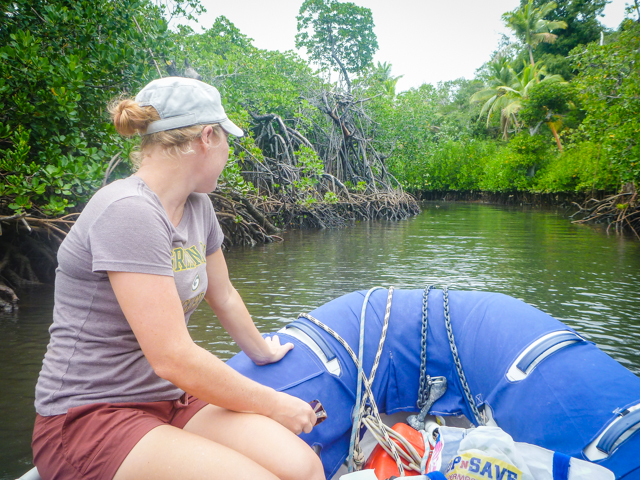
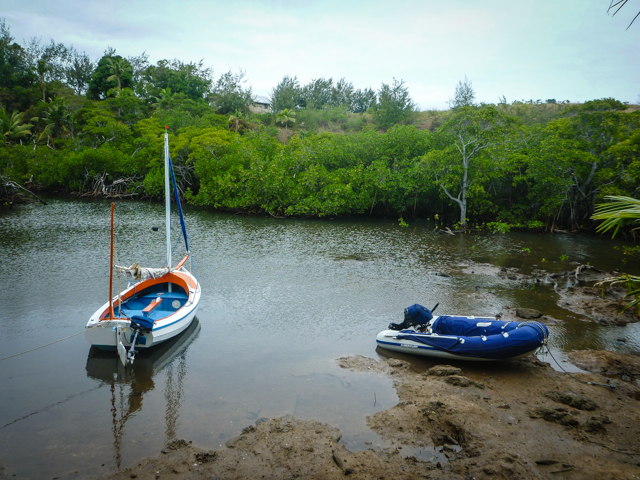
We found the parking lot in a muddy pool and parallel parked next to a little boat. A dirt trail ended at a wooden house where we were greeted warmly by Toki and his wife Miri. As we walked down a trail to the clearing cut into the jungle, Toki explained that the farm had been in his family for generations. When we indicated that we’d buy anything and everything they had, Toki and Miri led us up and down the aisles picking veggies and dropping them into our bags. We were thrilled.
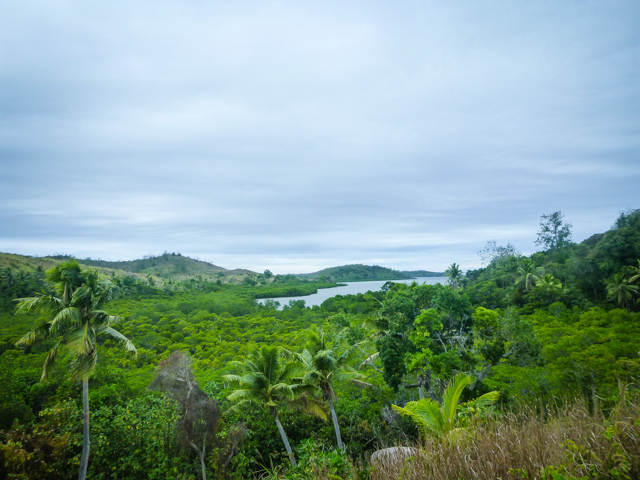
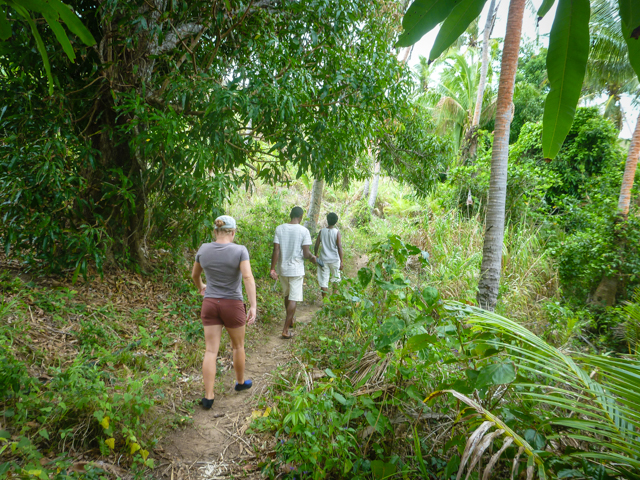
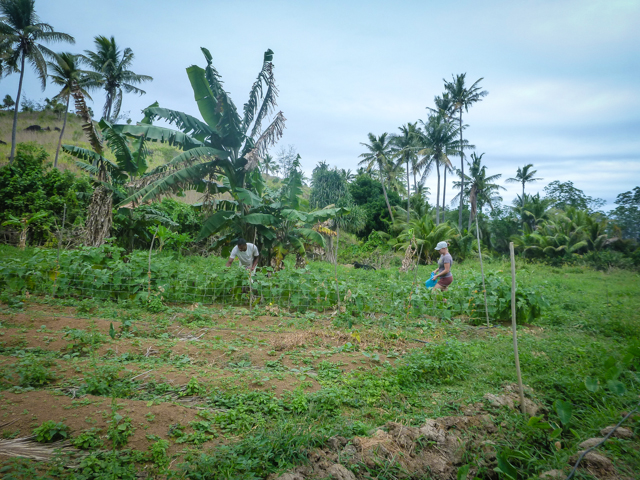
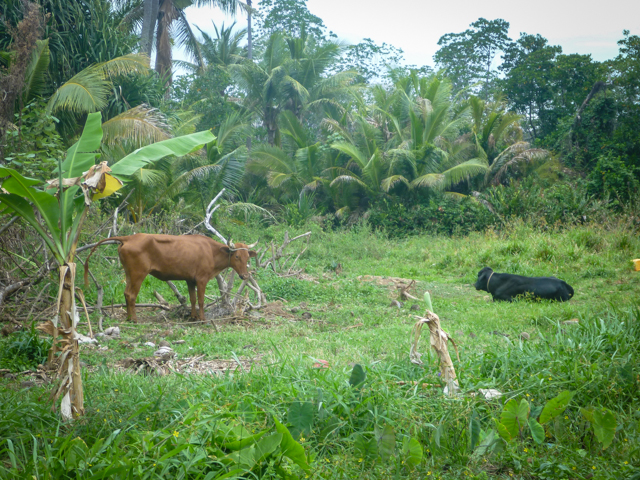
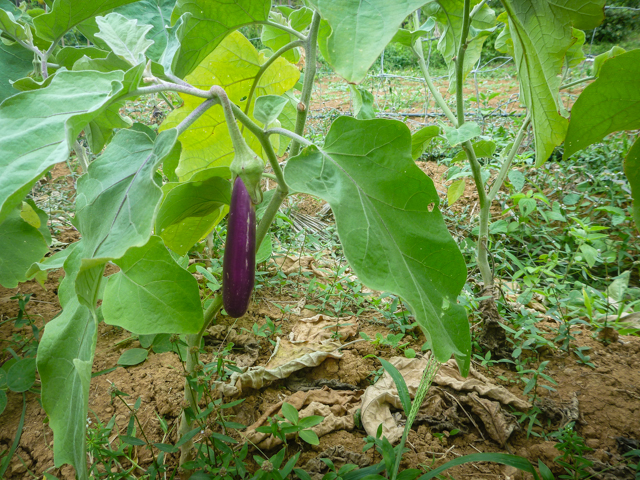
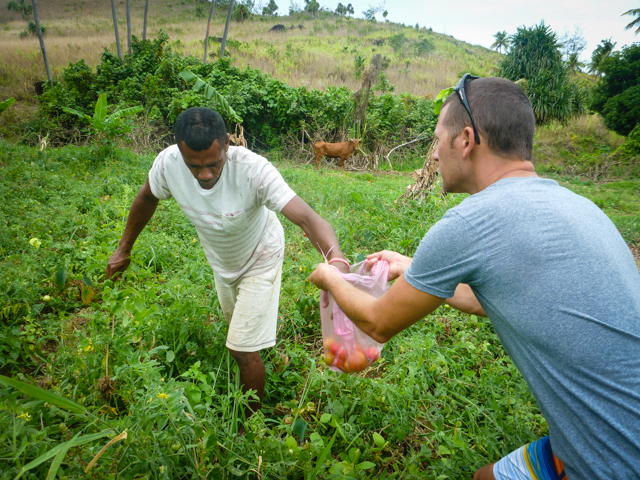
Toki also showed us the natural spring that made it possible to irrigate the land. When we could carry no more, we hiked back up the trail to their house and paid them for the produce. I brought an extra machete that I had aboard and gave it to them and they threw in a dozen eggs and a bunch of oranges. Back at the ranch, Miranda and I washed all our new goodies and made a salad that would make a vegan swoon. Not bad for twenty bucks.
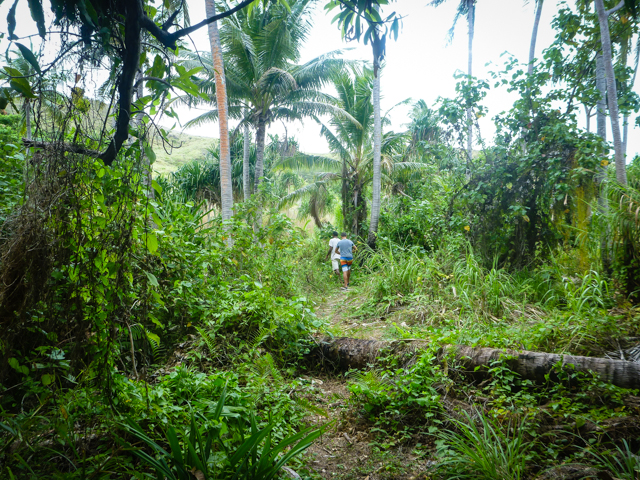
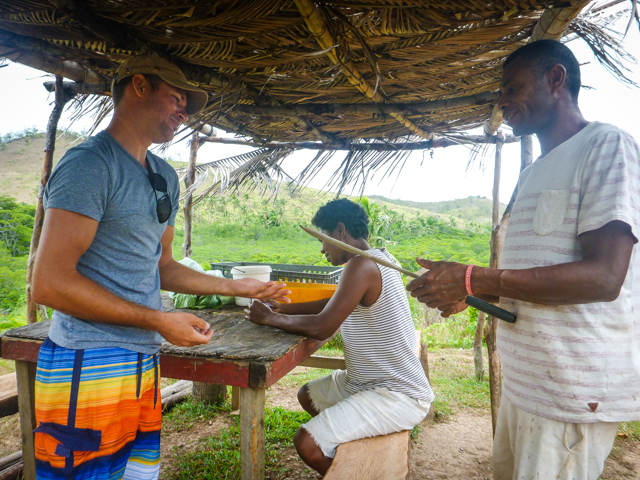
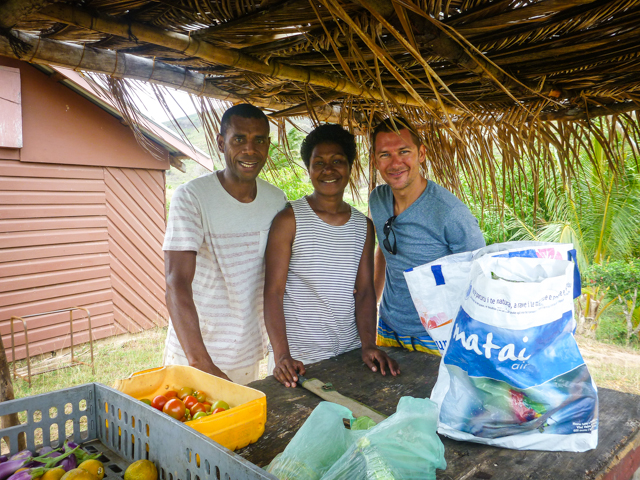
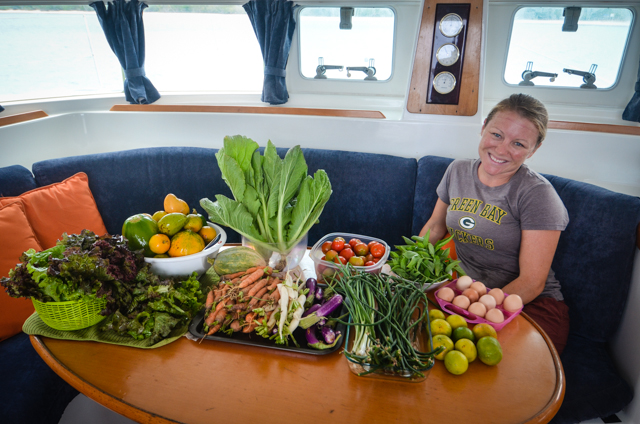
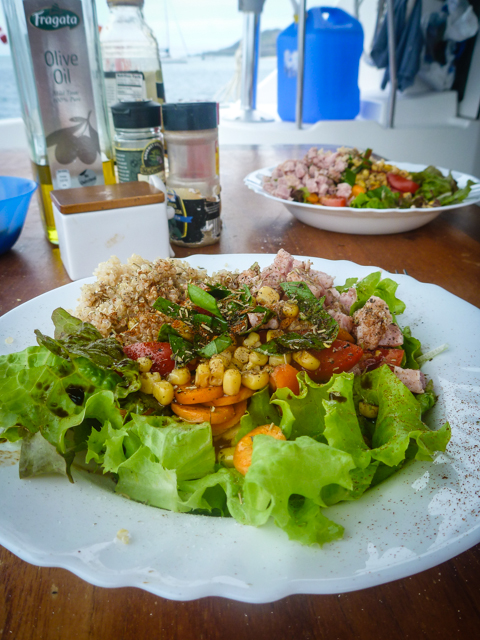
There’s a tropical low forming and the weather has been deteriorating for a few days. We’d really like to keep moving north but the wind was forecasted to kick up to thirty knots and rain. So for the last couple of days we’ve been aboard doing odd jobs, cooking, and reading, punctuated by blustery hikes around the island and kiteboarding sessions in horrid, squally conditions just for the hell of it. On the other side of Nanuya we found two standing shacks, one of which was a tea house. A lady came down from an even smaller shack on the hill to open it up and make us lemon leaf tea and cakes. Pretty darn cute.
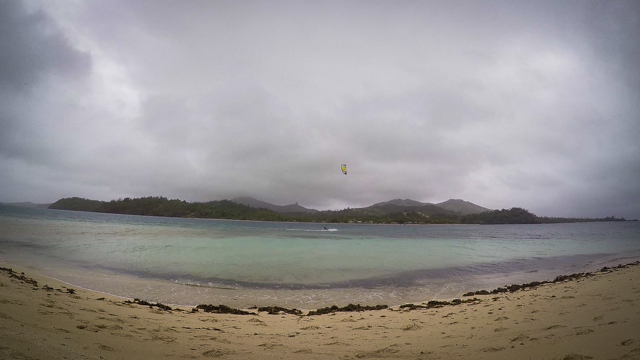
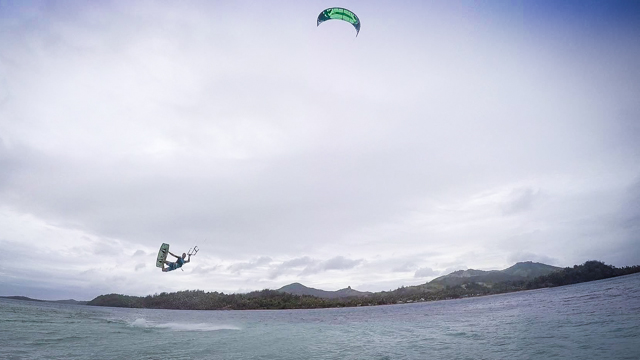
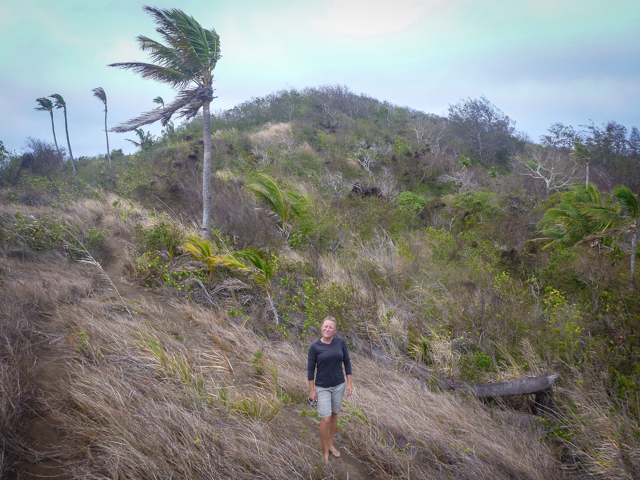


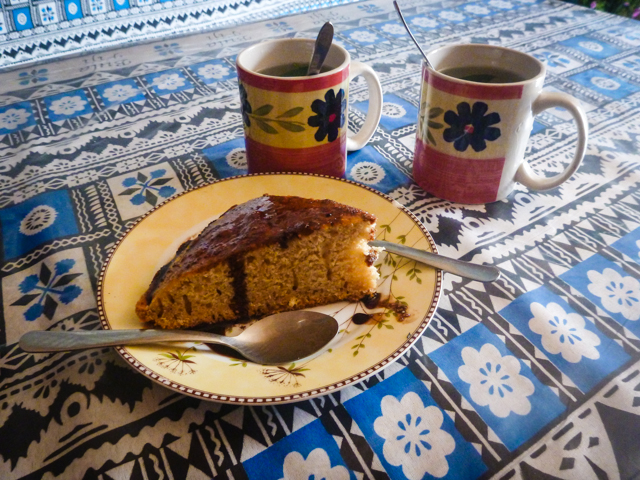
After a couple days of wind and rain we’re ready to move on from the protection of the Blue Lagoon and keep venturing north!
Author: Pete
Location: Naviti Island, Yasawas, Fiji
The morning we planned to sail north into Yasawas proper we were greeted with clear, sunny skies and surprisingly cooperative east wind. We sailed out of Nalauaki Bay with all the canvas we could muster, ripping along on a beam reach in calm seas at eight knots. After all the rough miles we’ve covered getting spoiled with day hops in protected waters has been beyond welcomed, and the day’s sail was glorious. It was like riding a multi-ton kiteboard, albeit with some ugly shoals that you can’t just hop over.
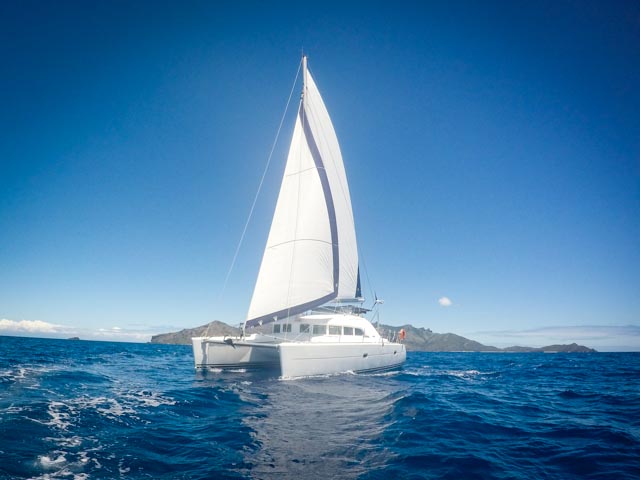
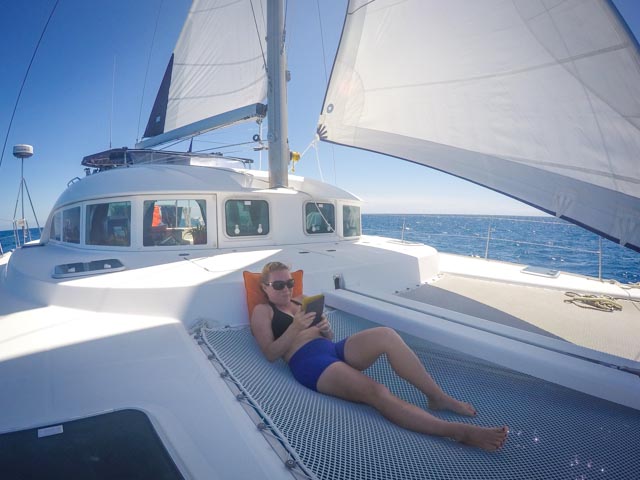
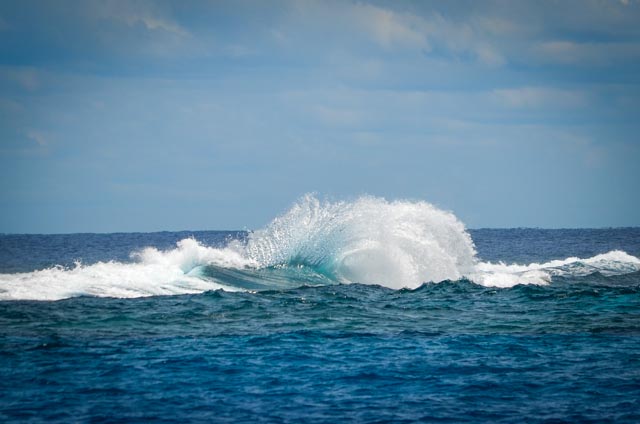
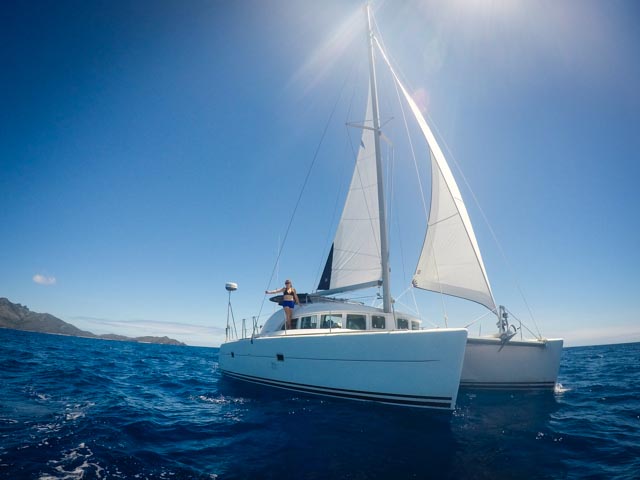
We anchored near the pass between Nanuya Mbalavua Island and Drawaqa Island, deep in about eighteen meters of water. It’s not an ideal anchorage, in fact the charts regard it as a day anchorage. We ended up staying for four nights.
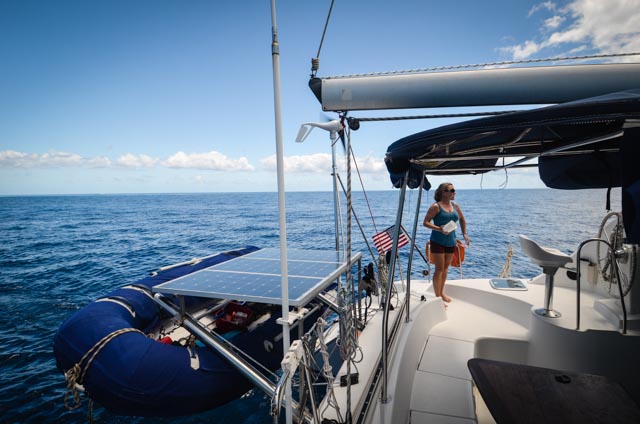
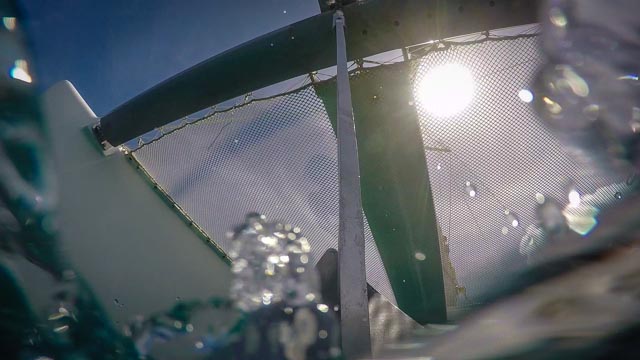
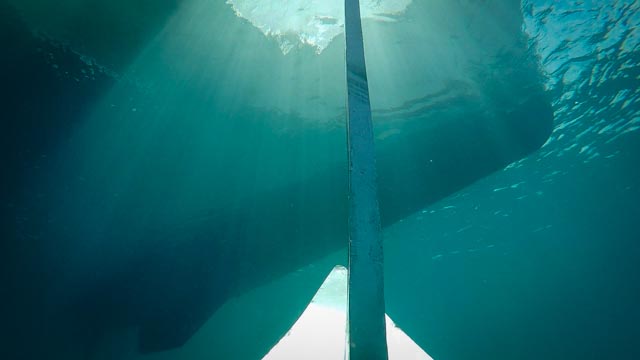
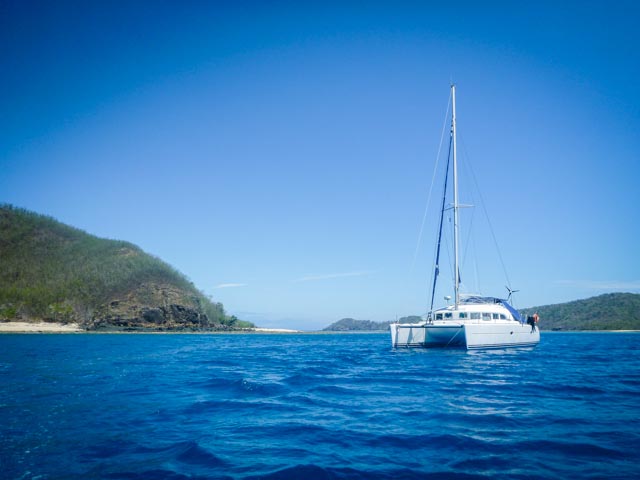
Aside from fantastic, healthy coral, there were several quiet beaches on the various islands. After spending most of the day snorkeling the reefs, we went out one night to have a bonfire on the beach one evening with our buddies from Tallulah Ruby. We got a blaze of driftwood, dead timber, and coconut husks burning, raked out the coals, and threw tin foil packs of fish and veggies in the embers as the stars peeked through the night sky. Just as we were marveling at the tranquility and solitude of our surroundings a boat load of twelve local guys in an open launch came ripping into shore. They jumped into the surf and waded up to our bonfire on shore, introducing themselves amiably. They were fishermen from the next village and come to spearfish on the reef, usually stopping on the beach to have tea before they go out into a cold night in the sea. We welcomed them to share our fire, talked about fishing and helped repair equipment as they waited for tea to warm. They invited me to go in with them but my dive lights were both out of commission at the time. Also, twelve guys wielding spears in close proximity in the dark water sounded like a recipe for a nice puncture wound and a belated tetanus shot.
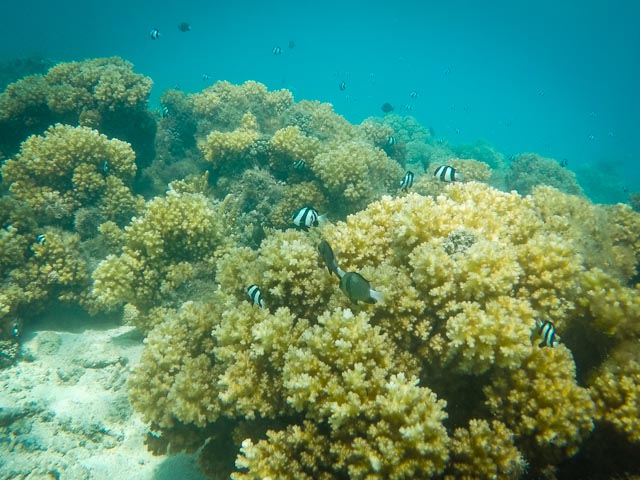
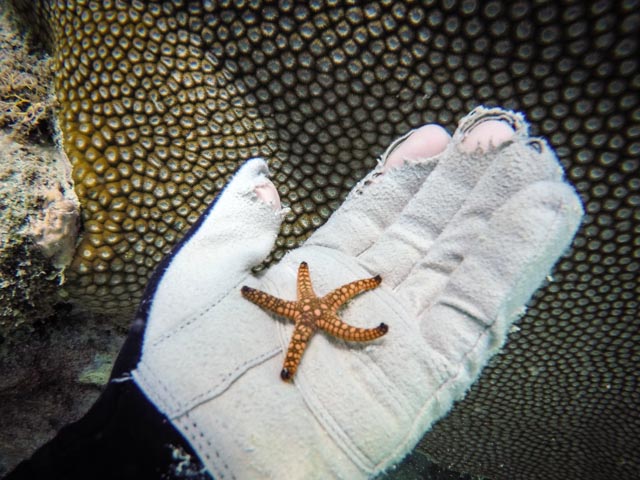
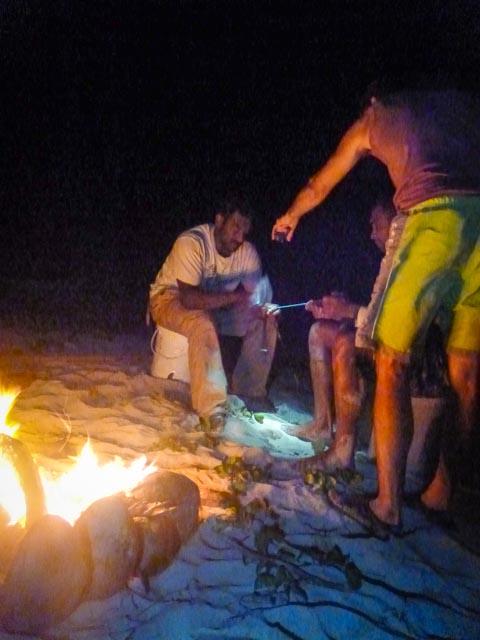
The draw of the place is the giant manta rays that frequent the pass between Drawaqa and Naviti islands. We had several days of snorkeling with them as they wing in and out of the pass in the afternoon. The plankton upon which the mantas feed yields poor water clarity, but it’s more than worth it to swim along side of these gulping monsters. They don’t really seem to mind us there, but when you get too close they’ll zip off with almost imperceptible movement, surprising with their grace and power.
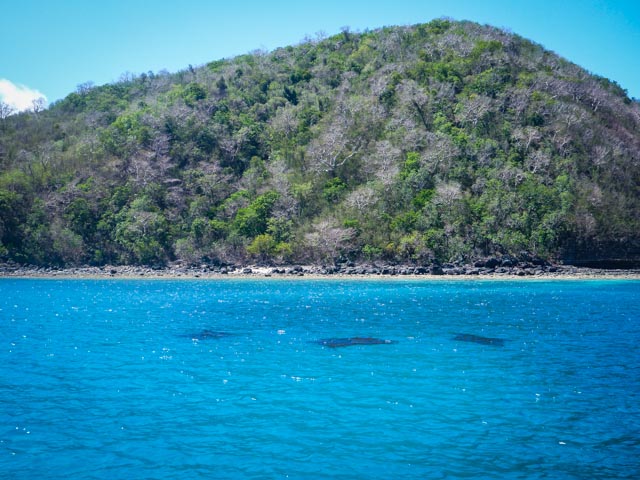
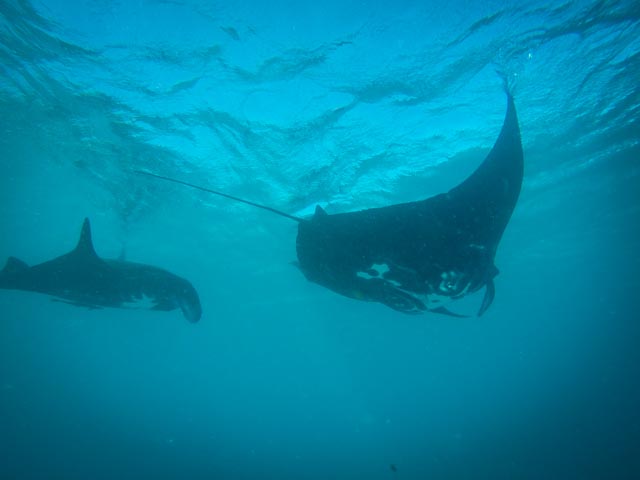
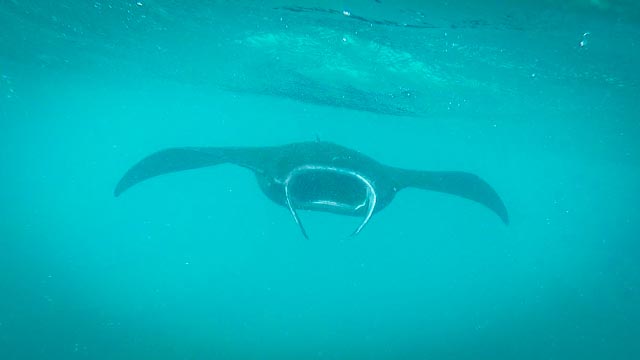
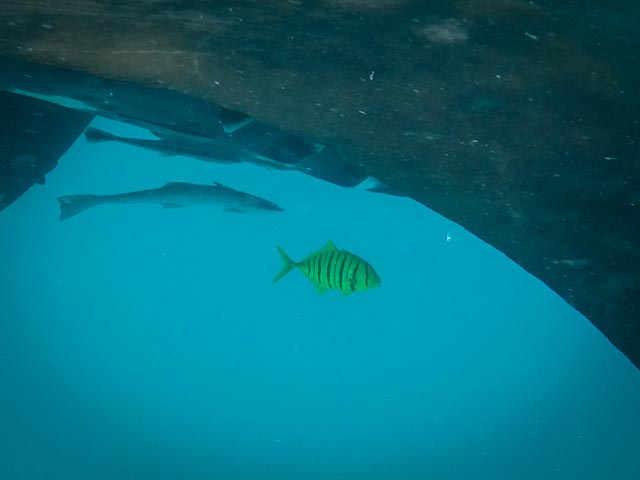
The problem with the anchorage is how the oscillating currents ripping in and out of the pass and the wind swirling around the island affect an anchored boat. The boats weren’t affected by the wind and current in the same way, depending on their keel, windage, and scope, nor spun at the same time on the changing tide. So at any given point, the four boats in the small anchorage were pointed in four different directions, sometimes really far apart, sometimes unsettlingly close. From the air, Tayrona and her friends must have looked like a bunch of four-year-olds in an interpretive dance class. After a couple nights of pirouettes, we decided to go dance by ourselves farther north.
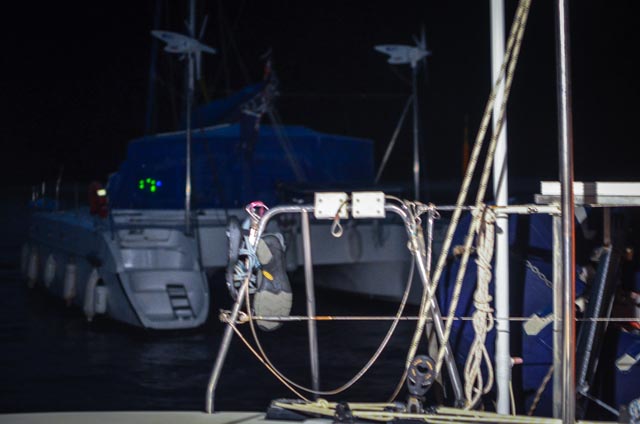
Sailed an hour or two north to Vaga Bay on the west side of Naviti and settled ourselves in a secluded anchorage for a windy, but nice enough night. The next day we continued on to the well-protected Natuvalo Bay. Met up with Tallulah Ruby and took advantage of the first little bar we’d seen in a while. That night they threw a little party with some fire dancing. Miranda and I spent the next day snorkeling the reefs around the bay and then went back out night lobstering later that evening.

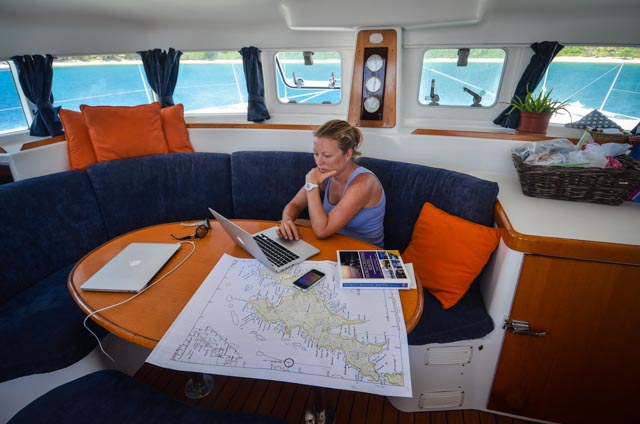
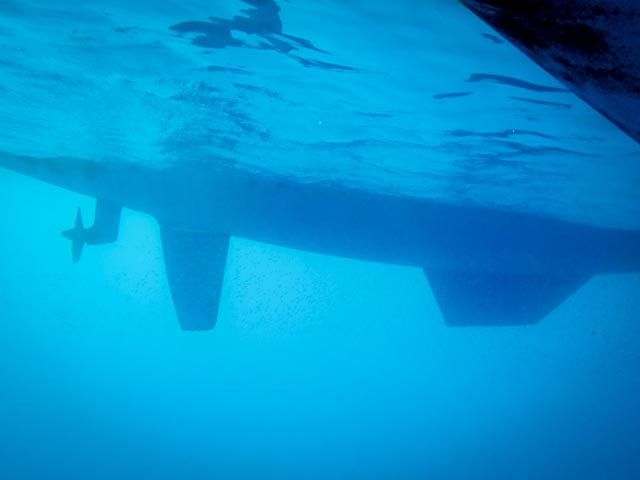
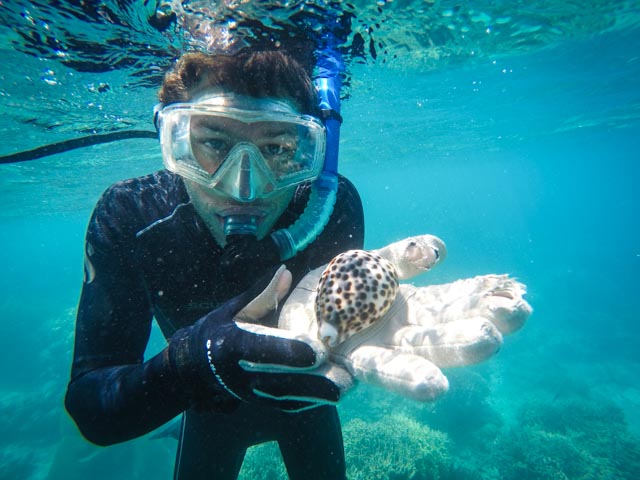

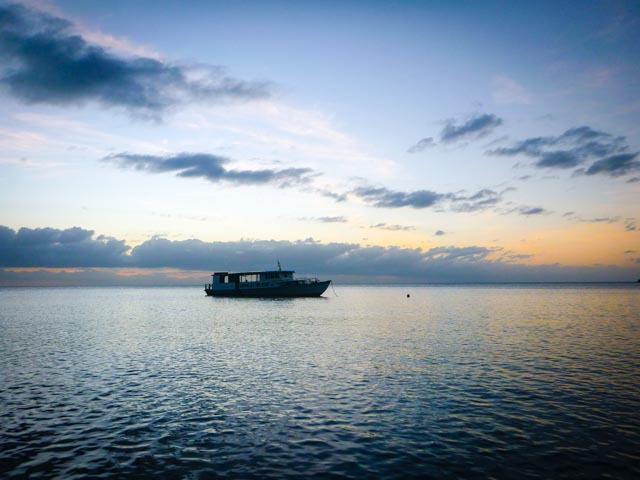
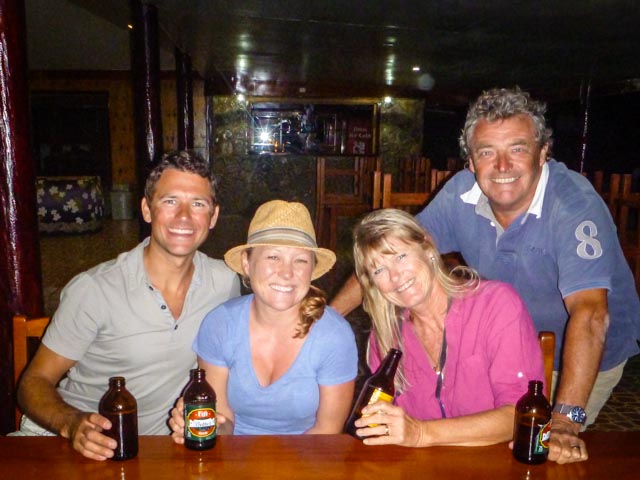
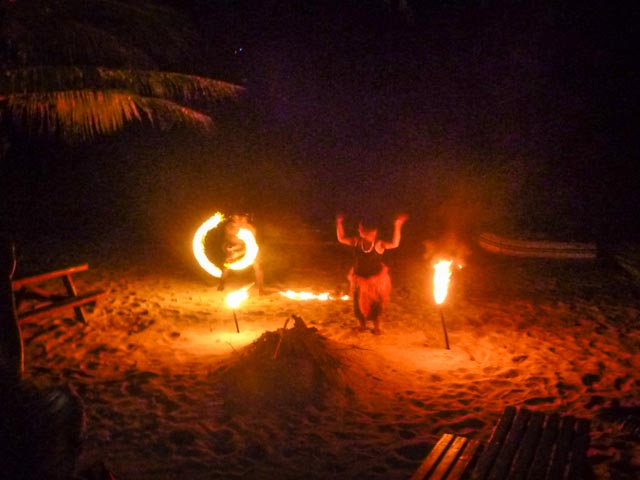
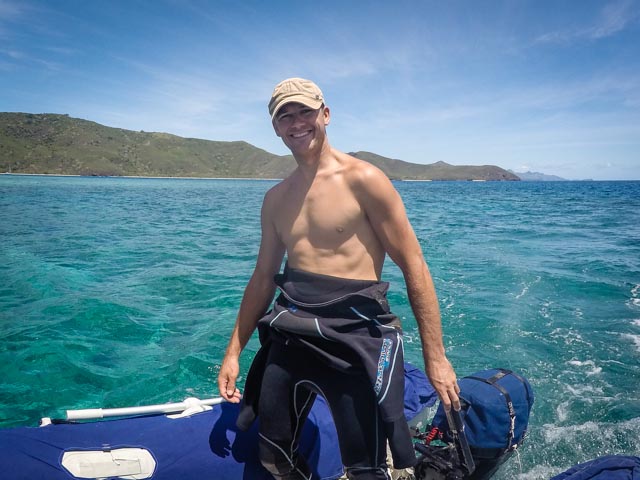
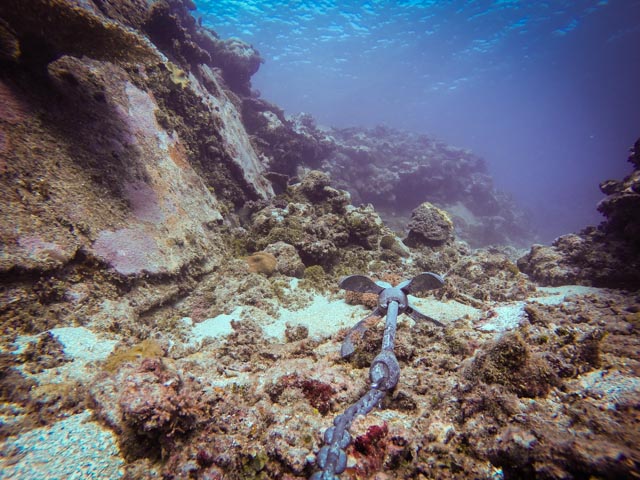
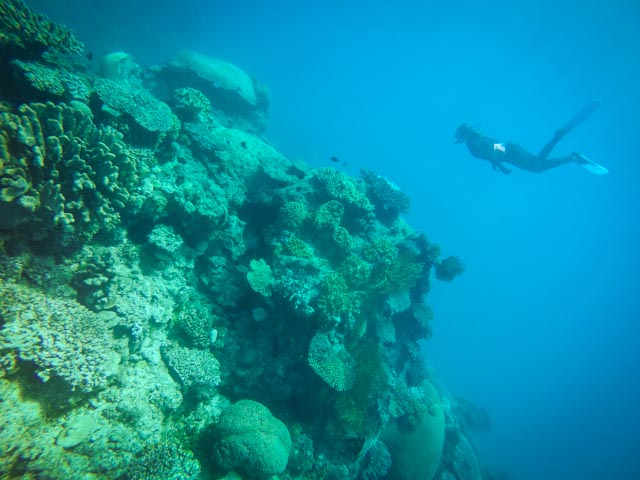
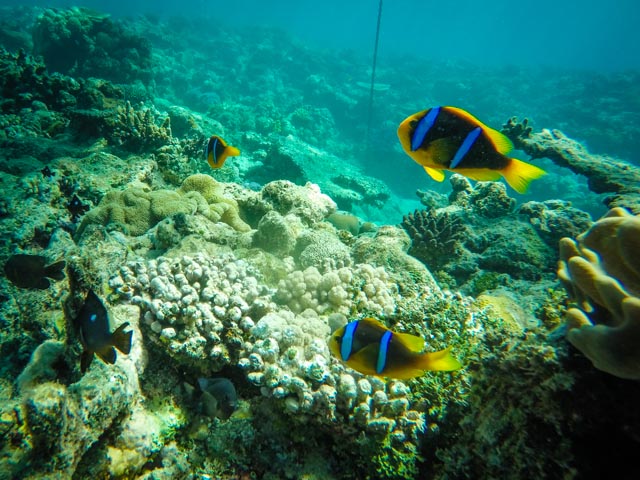
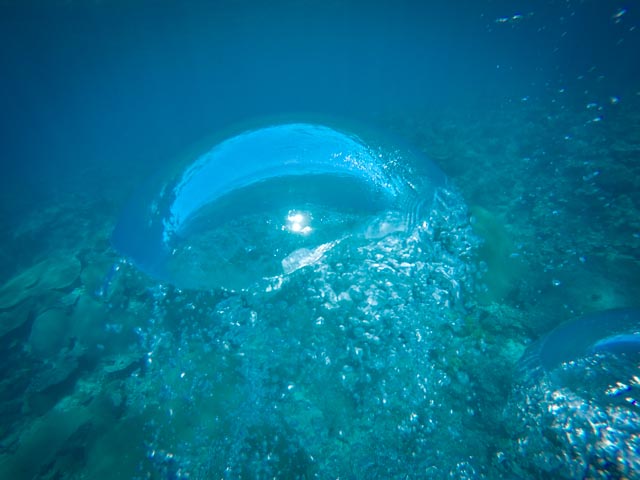
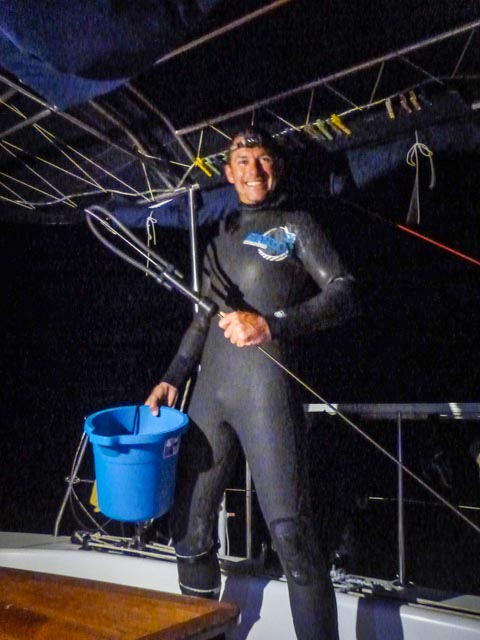
After a couple days enjoying the anchorage, we sailed around the north end of Naviti island to the wide Somosomo Bay. The village tucked into the southern shores from which the bay derives its name is a collection of rough houses on blocks with a few fishing boats anchored in the shallows. We anchored deep but in good holding and went in to shore to pay our respects to the chief.
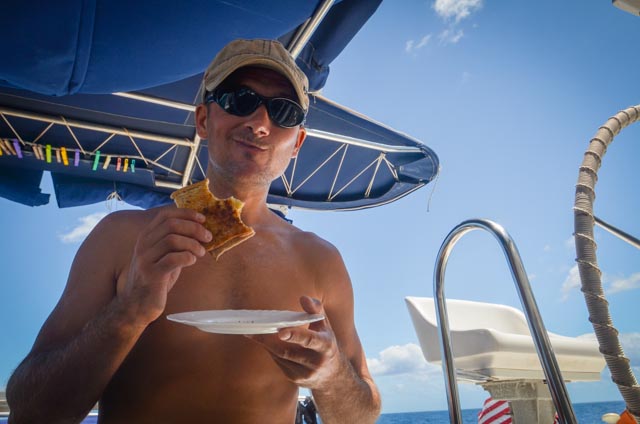
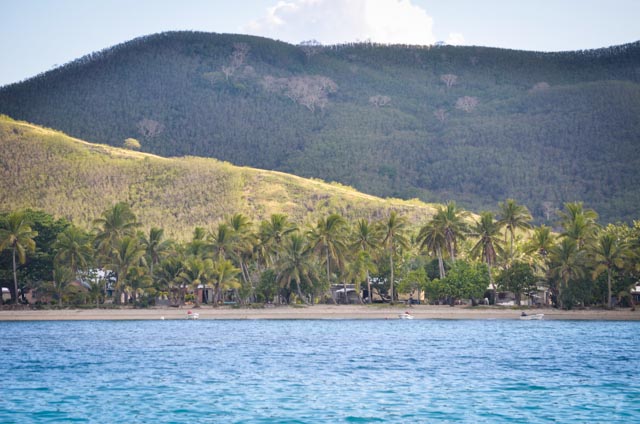
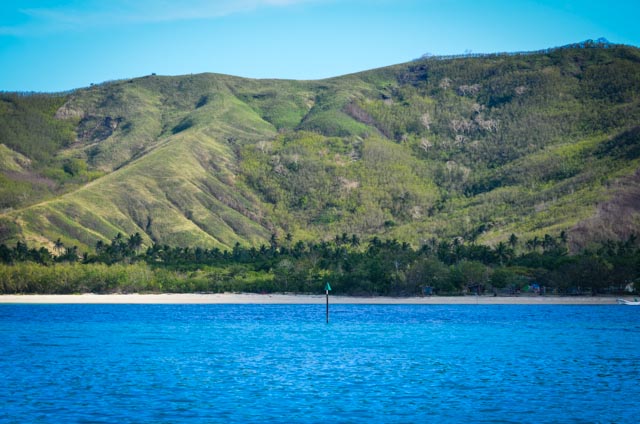
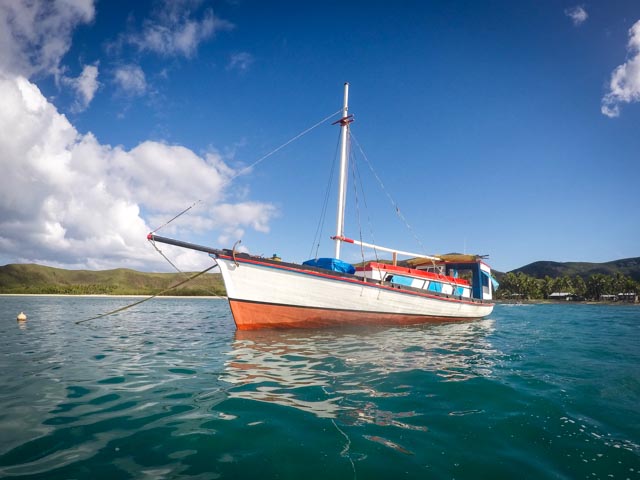
First thing we noticed as we came ashore was the number of people about, generally dressed up and sitting in the shade. As our guide Twoway led us to the chief’s house, the second thing we noticed was a big slaughtered cow sprawled out on the path. Apparently a village elder had died that morning and people were gathering from the surrounding islands for the expeditious funeral required by the tropical heat, all who needed to be fed after the service. Hence, the dead cow.
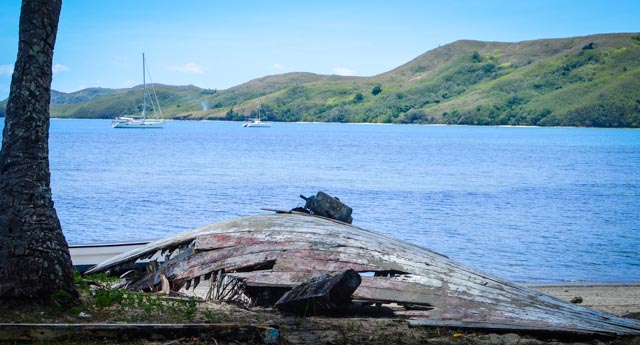

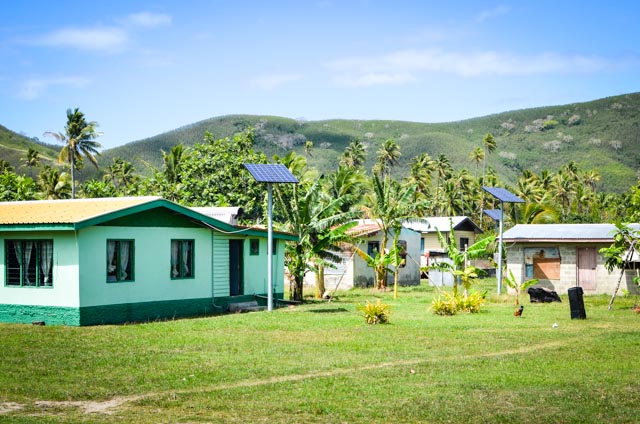
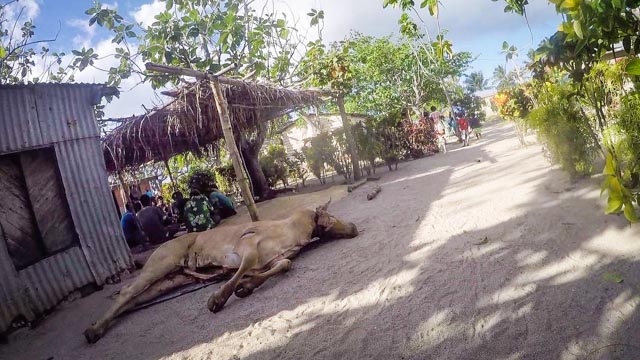
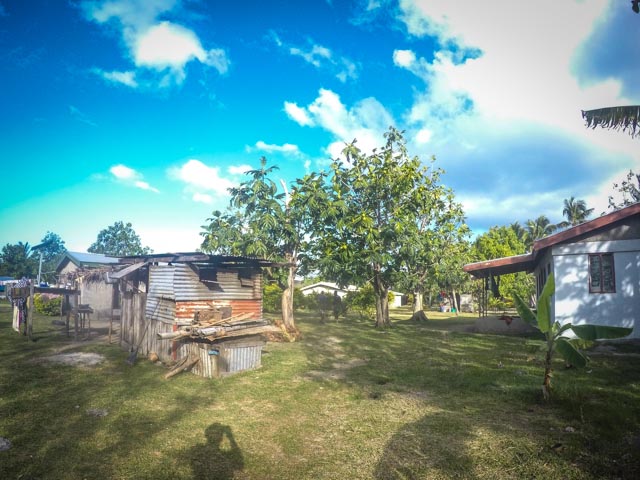
We presented our kava to the village chief, the first female chief we’ve encountered, and much clapping and chanting ensued. It was too early to drink the kava, but we bought some fruit and explored the town. We visited the beachside kindergarten with munchkins running around barefoot. The older kids are bussed up to the next town in an open boat. In my mind, the boats should have been painted bright yellow.
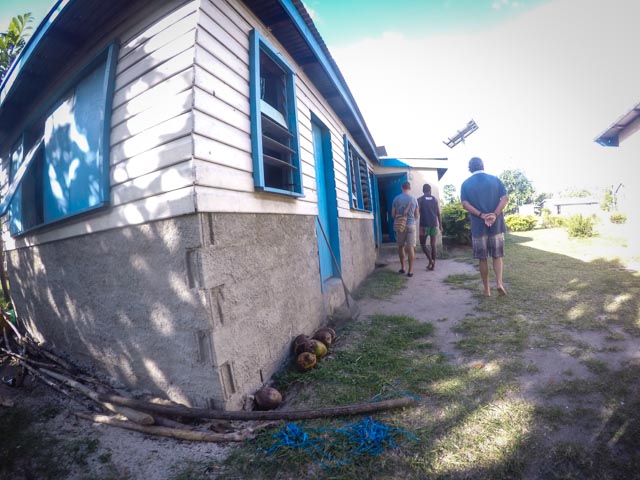
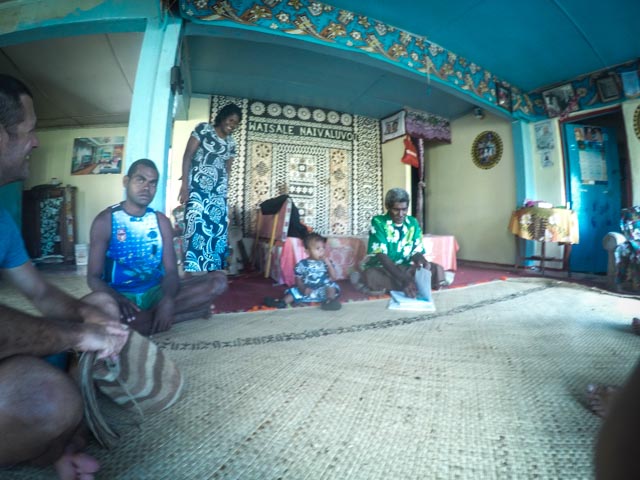
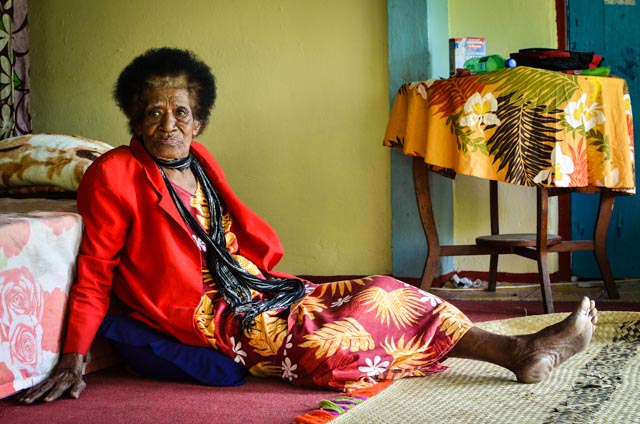
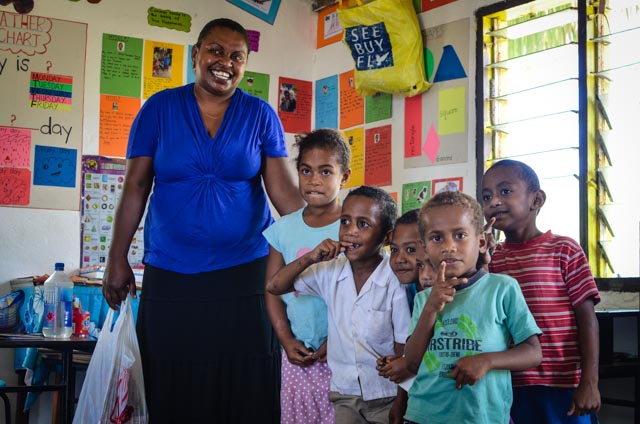
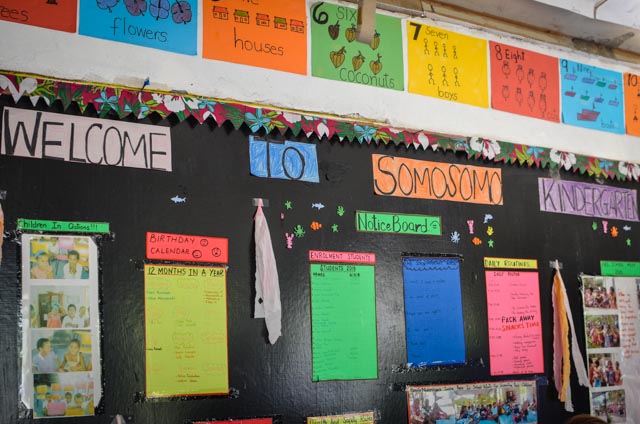
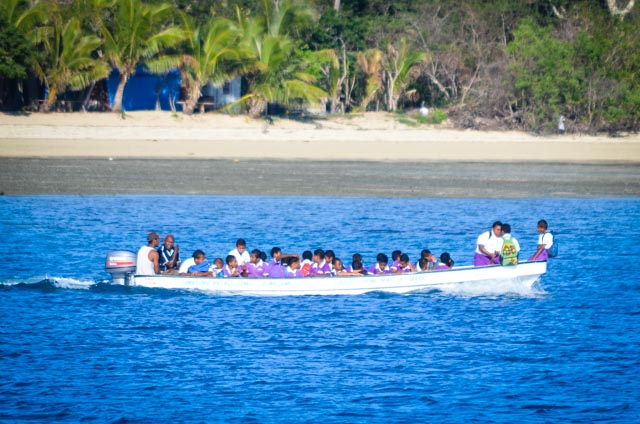
October sixth marked our one year anniversary aboard the our fair Tayrona! We celebrated with a day of leisure on the boat, some snorkeling, a homemade pizza, and a little skinny dipping! Note Miranda’s great coconuts!
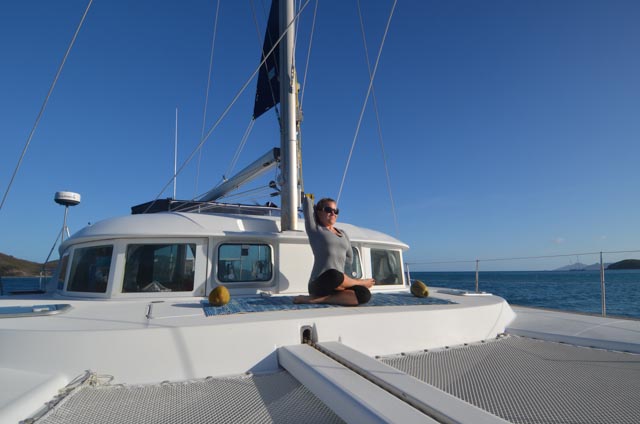
The coconuts on the yoga mat, of course. She uses them to hold it down to the deck on windy days. Get your mind out of the gutter!
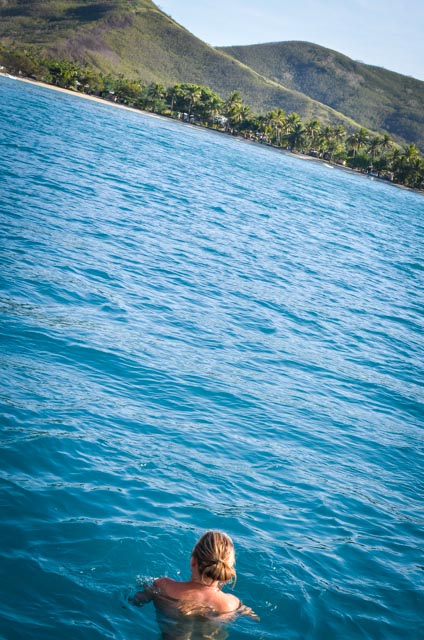
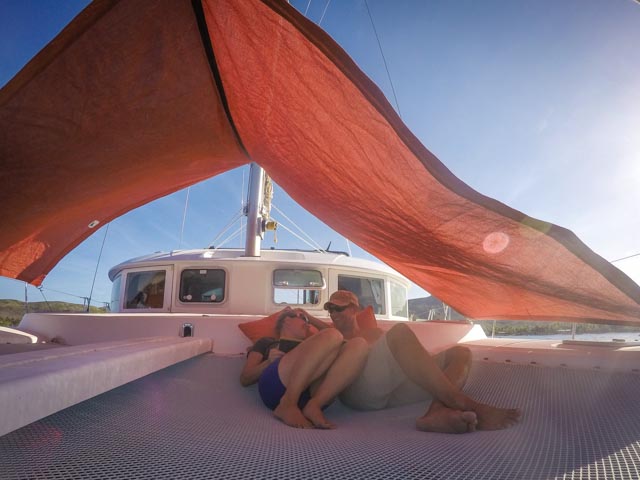
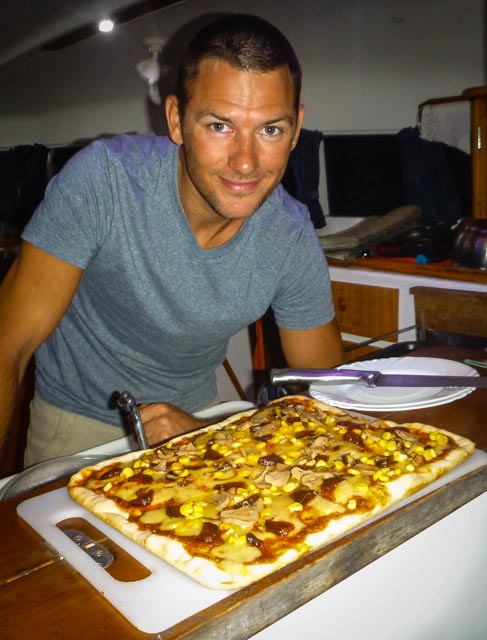
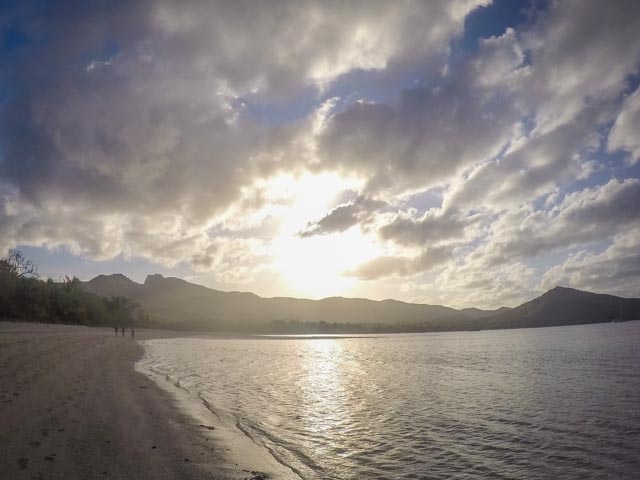
Moved to the northeast side of Somosomo Bay to hunt down a WWII airplane wreck reportedly sunk on the windward side of the island. I lost a week-long fight with the dinghy prop, which has now basically dissolved after plans A through G to repair it failed. It’s totally shredded. We hopped a ride to shore with Tallulah Ruby and found the winding single track path across island. It’s significantly drier here in Fiji than I expected, but that’s because the rain typically falls on the east side of the islands and we’re in the west.
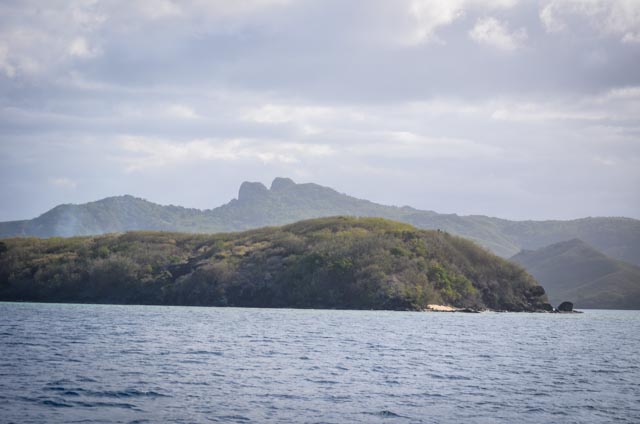
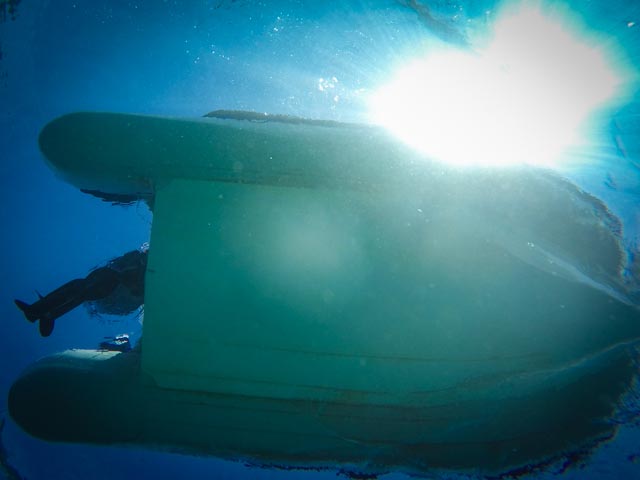
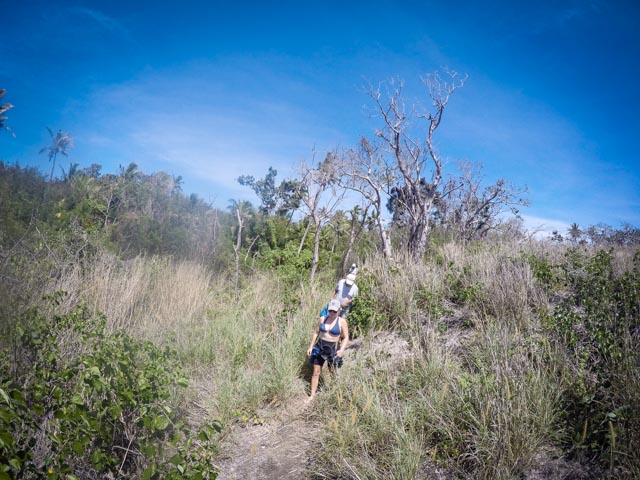
On the other side of the island a few deserted shacks and some propped up outboards stood quietly under the palms. With no real idea where to look for the airplane and several miles of open beach we hunted down a lone figure on the shore. The local guy showed us a buoy in the bay that marked the wreck, and we gave him a bag of rice, pasta, and fishing hooks. He seemed pleased by the trade.
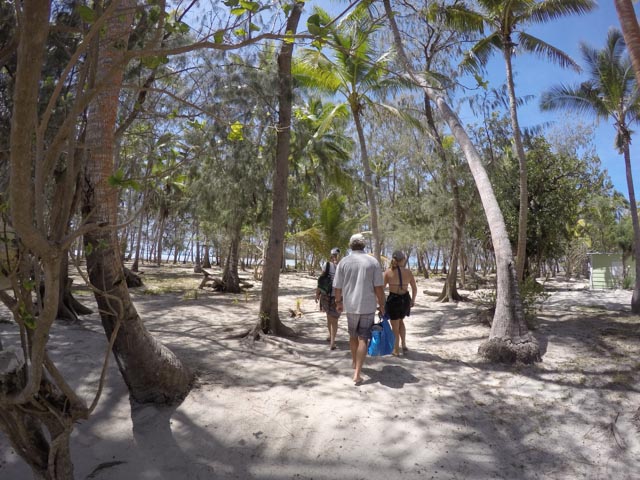
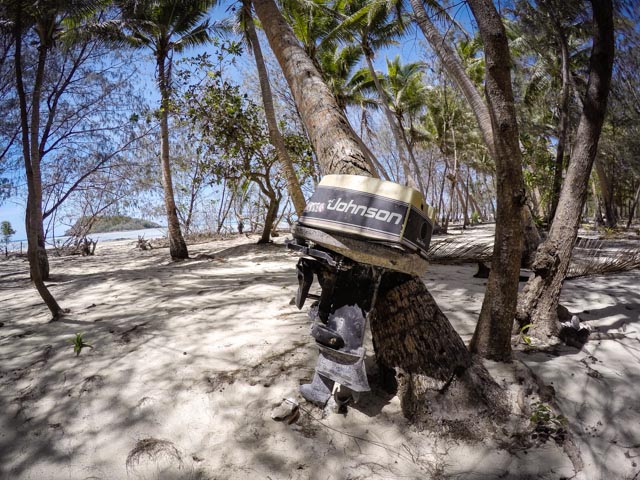
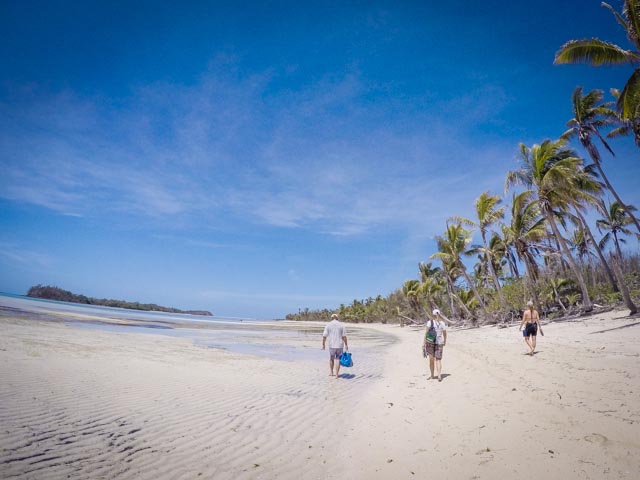
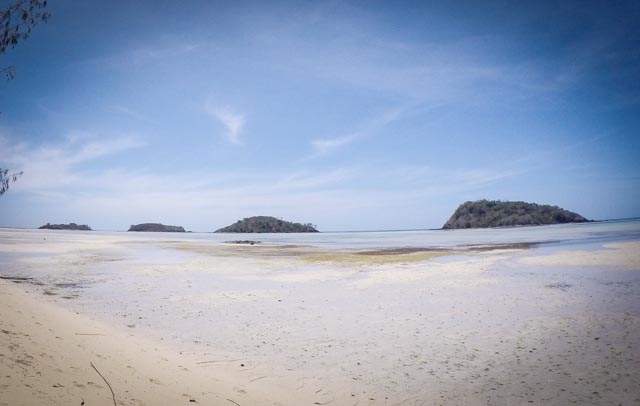
We walked back down the beach and snorkeled out to the buoy. In ten feet of water, a shredded airframe basked. Our friend on the beach didn’t know the history, and the plane was too torn up to show any sign of its origins. Anemones grew in the cockpit hole, and not too much was left to distinguish the wreckage as an airplane. Still it was a worthwhile hike and snorkel. We had another lovely bonfire on the beach and prepared to sail north the following day.
